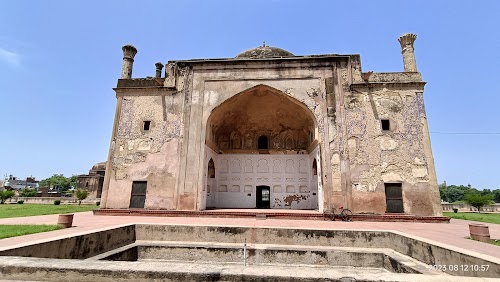
Chini Ka Rauza
Agra, India
- Admire the glazed tile work
- Explore the tomb and its architecture
- Learn about Mughal history
- Photograph the intricate details
Known for:
Description:
Chini Ka Rauza is a funerary monument, rauza in Agra, India, containing the tomb of Allama Afzal Khan Mullah, a scholar and poet who was the Prime Minister of the Mughal Emperor Shah Jahan. The tomb, built in the first half of the 17th century, is known for its unique glazed tile decoration, which gives it the name 'Chini Ka Rauza', meaning 'China Tomb'. The monument showcases a blend of Persian and Indian architectural styles, featuring intricate mosaic work and calligraphy. While the glazed tiles have suffered some damage over time, the remaining portions offer a glimpse into the exquisite craftsmanship of the era. The tomb stands amidst a charbagh garden, a traditional Persian-style garden divided into four quadrants.
History:
Chini Ka Rauza was built in 1635 as the tomb of Allama Afzal Khan Mullah, a scholar, poet, and nobleman who served as the Prime Minister during Shah Jahan's reign. He held various prestigious positions and was highly regarded for his intellect and literary contributions. The tomb's construction marked a departure from the prevalent red sandstone architecture of the Mughal period, showcasing the use of glazed tiles, a technique influenced by Chinese ceramics. Over time, many of these tiles have been lost or damaged due to weathering and neglect, but the remaining tiles and the overall structure still offer a valuable insight into the architectural experimentation of the time. The monument stands as a testament to the rich cultural exchange and artistic innovation during the Mughal empire.